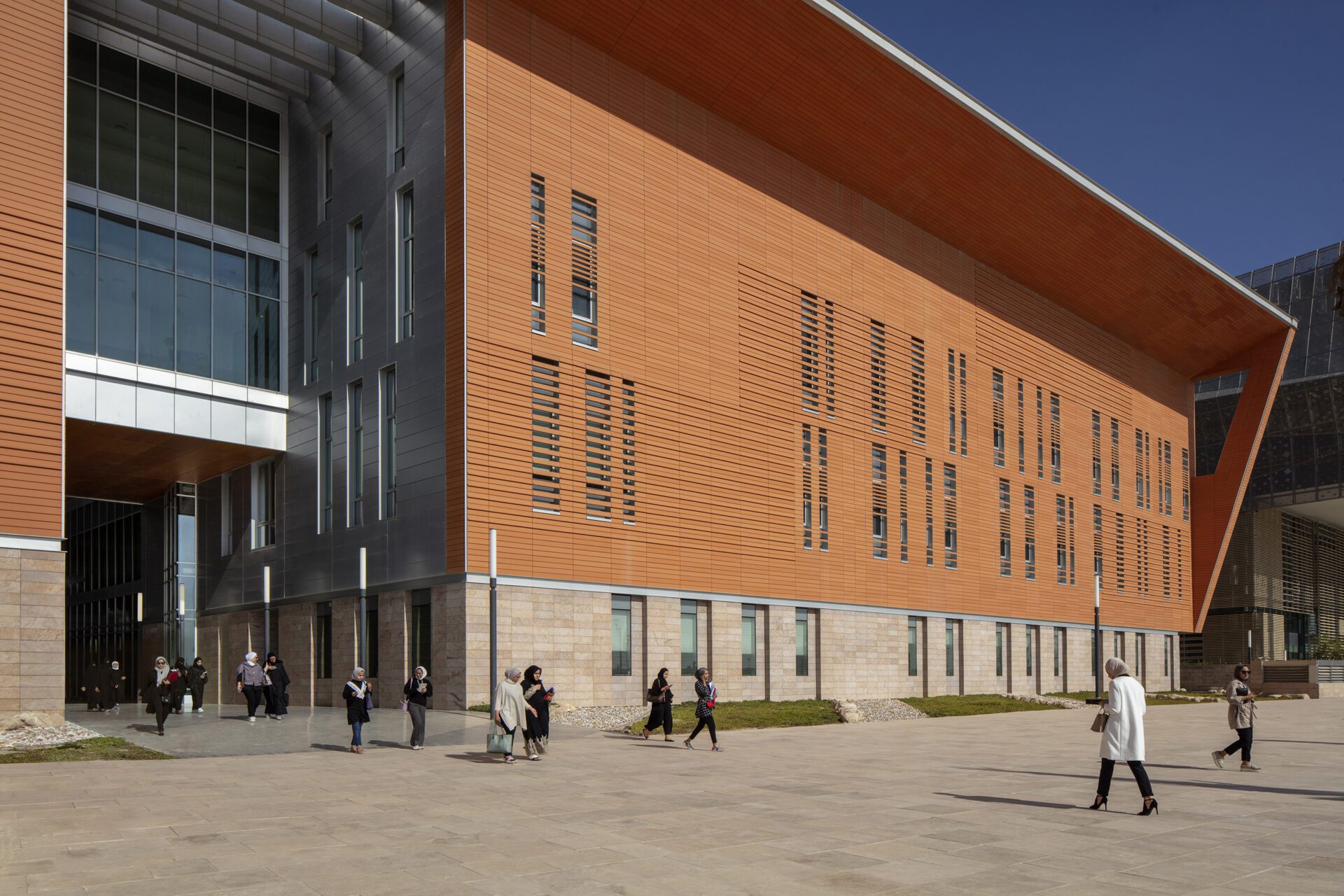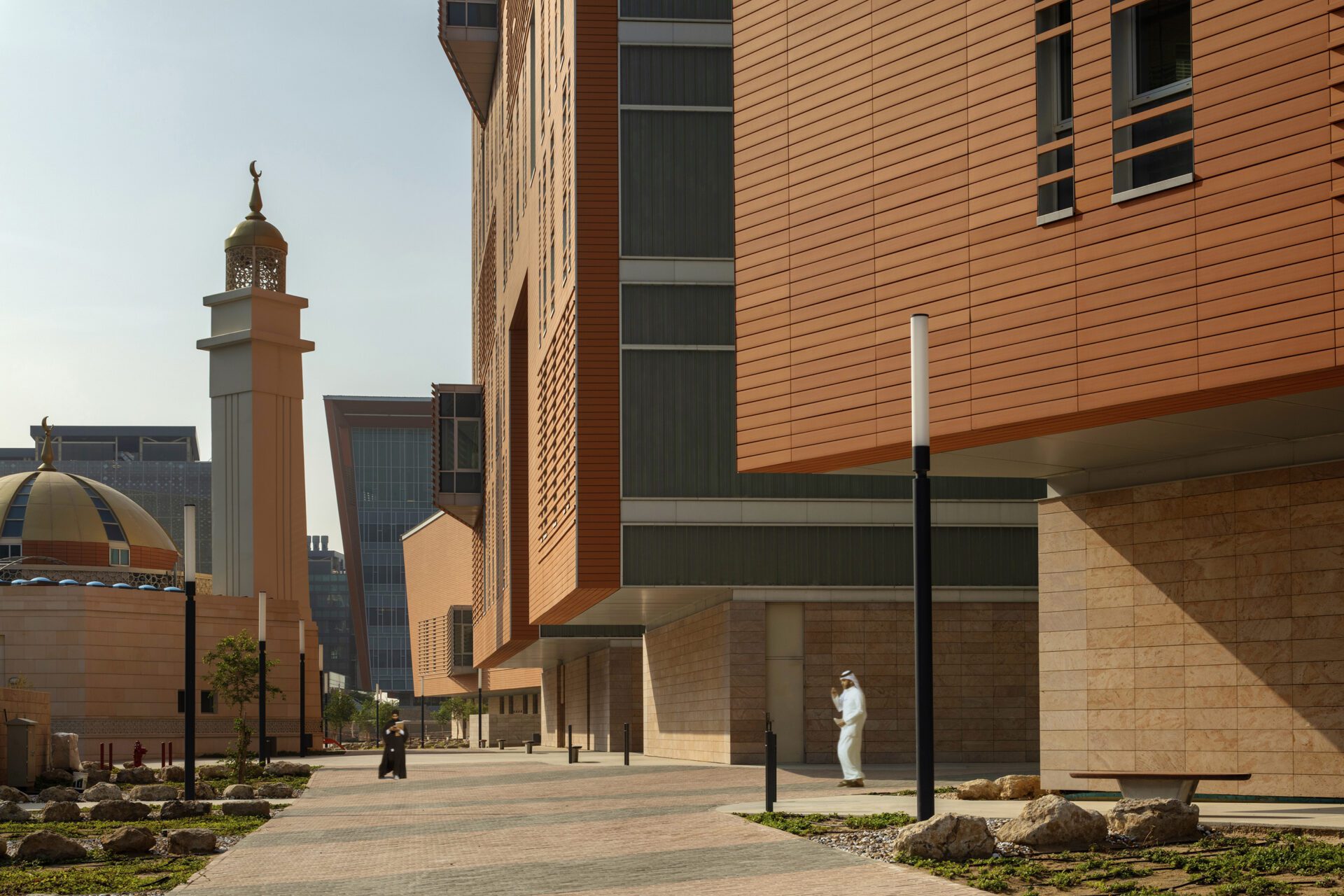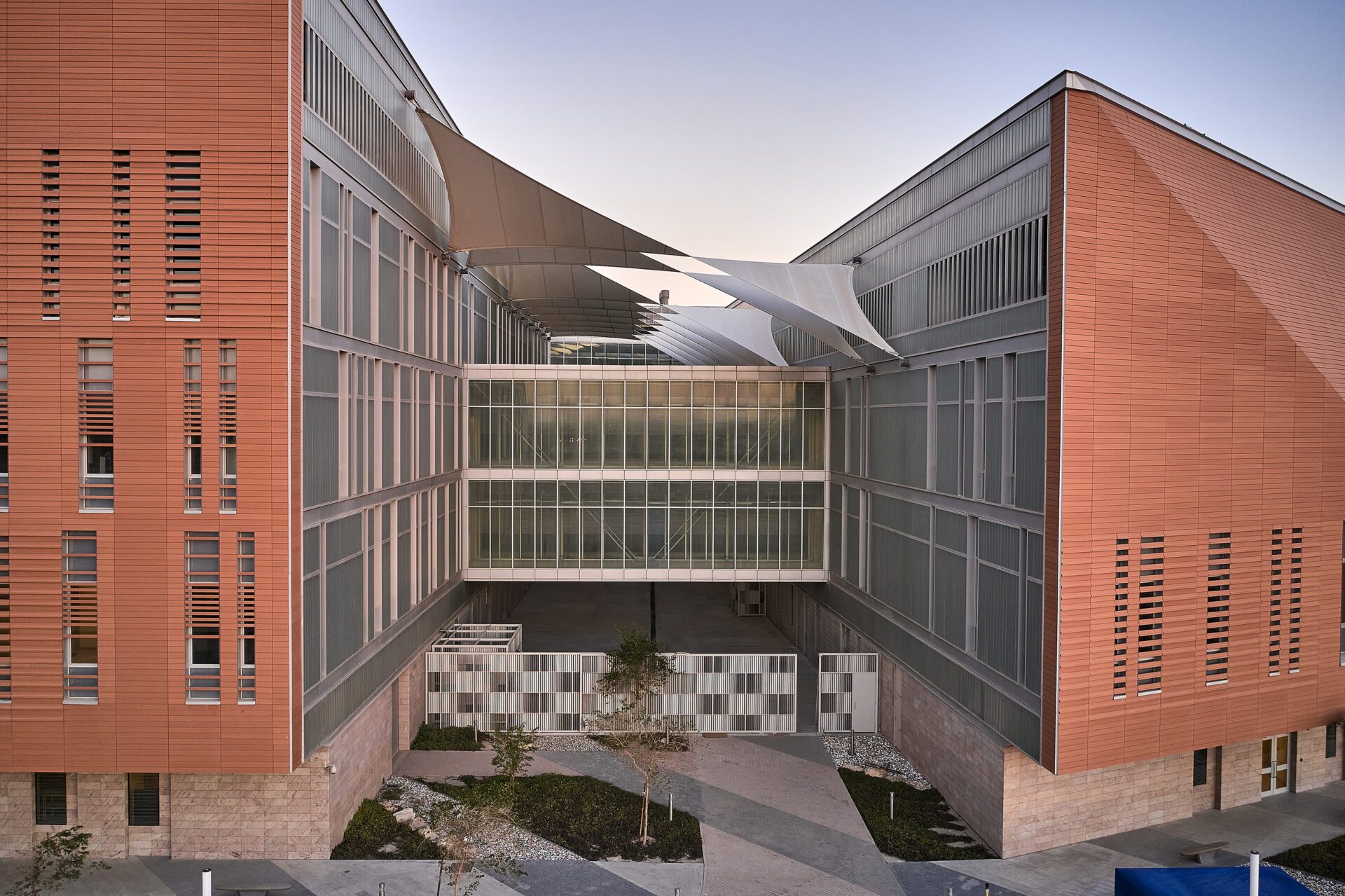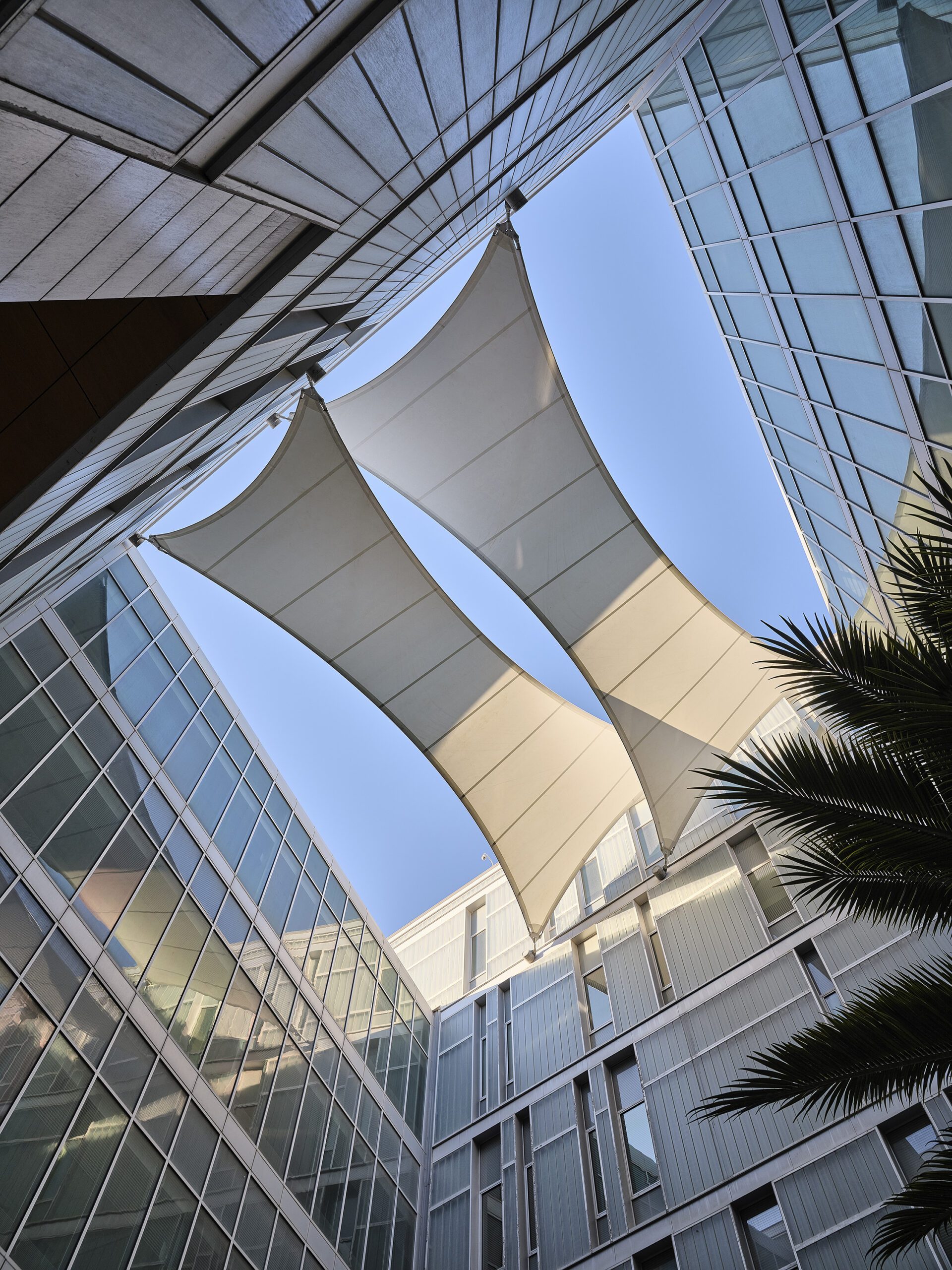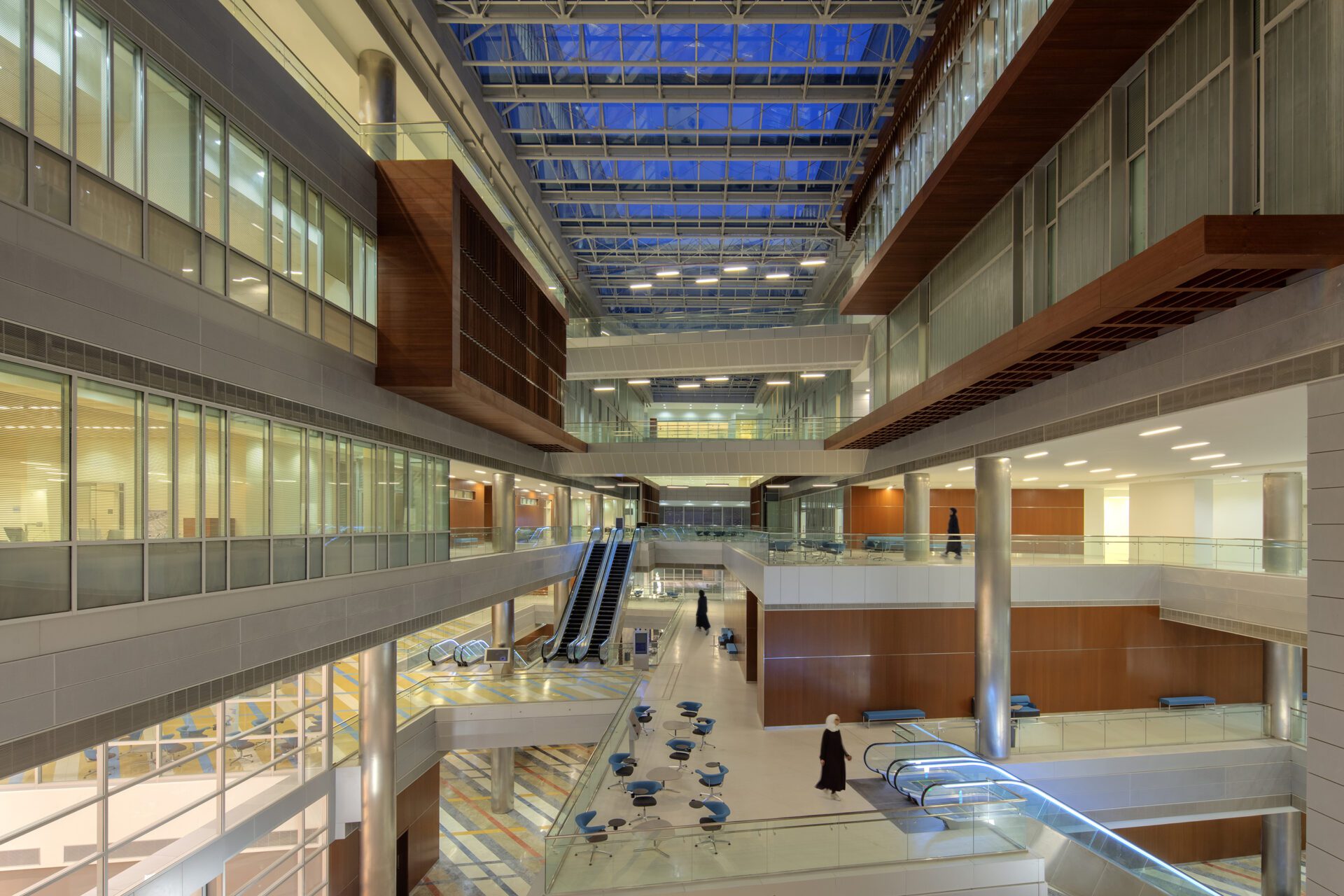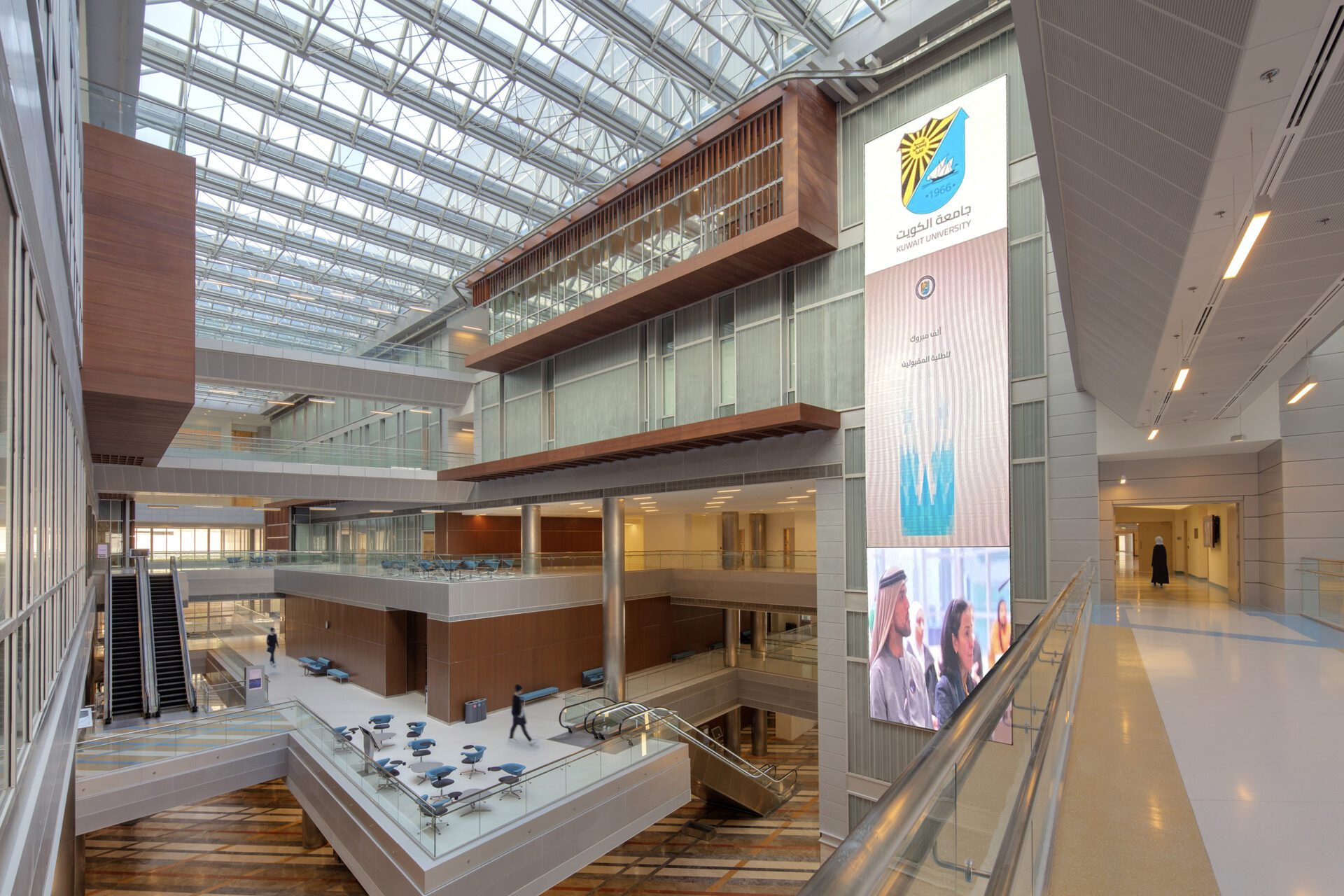Kuwait University – College of Engineering and Petroleum
CambridgeSeven & Gulf Consult
Short description
With over 290,000 m2 on a designated 73,500 m2 section of campus, the design of COEP took its greatest challenge—its size—and created an unprecedented switch-back form that permits exterior views and daylight, fostering a healthy, conducive learning environment.
Solving the puzzle of fitting 4,705 students, 500 faculty and administrators, 155 classrooms, 502 laboratories and 1,300 offices into a cohesive whole led to the innovative design that reimagined a linear layout and folded it back on itself several times. This zig-zag configuration creates deep courtyard shading that mitigates the harsh desert sun while providing outdoor views and admitting filtered daylight through a desert-inspired terracotta rainscreen. This series of shaded courtyards is equipped for experiments, research, construction, and other work too large to be conducted indoors. A section of the complex also includes several specialized spaces. A 3,251 m2 Ocean Engineering Lab features a giant, 1.9-million-gallon ocean tank that facilitates modeling of coastal structures at a scale that was previously unavailable to the University.
Designed to meet LEED Silver requirements, the building significantly reduces its potential environmental impact compared with a conventionally designed building. A rooftop solar water heating system provides hot water needs for the whole college all the year-round. Additionally, responding to a gender separation mandate early in design that called for replicated facilities on facing men’s and women’s campuses, COEP exists as two distinct buildings separated by a campus oasis.
Creating a welcoming, engaging and navigable environment where engineering students are likely to spend significant portions of each day prompted a thoughtful approach to wayfinding that uses clear sightlines and shortcut bridges that link the bars of each building. A multi-story galleria creates an all-weather “souk” space allowing easy access to food and student services and allowing casual interactions that foster community.
Entry details


